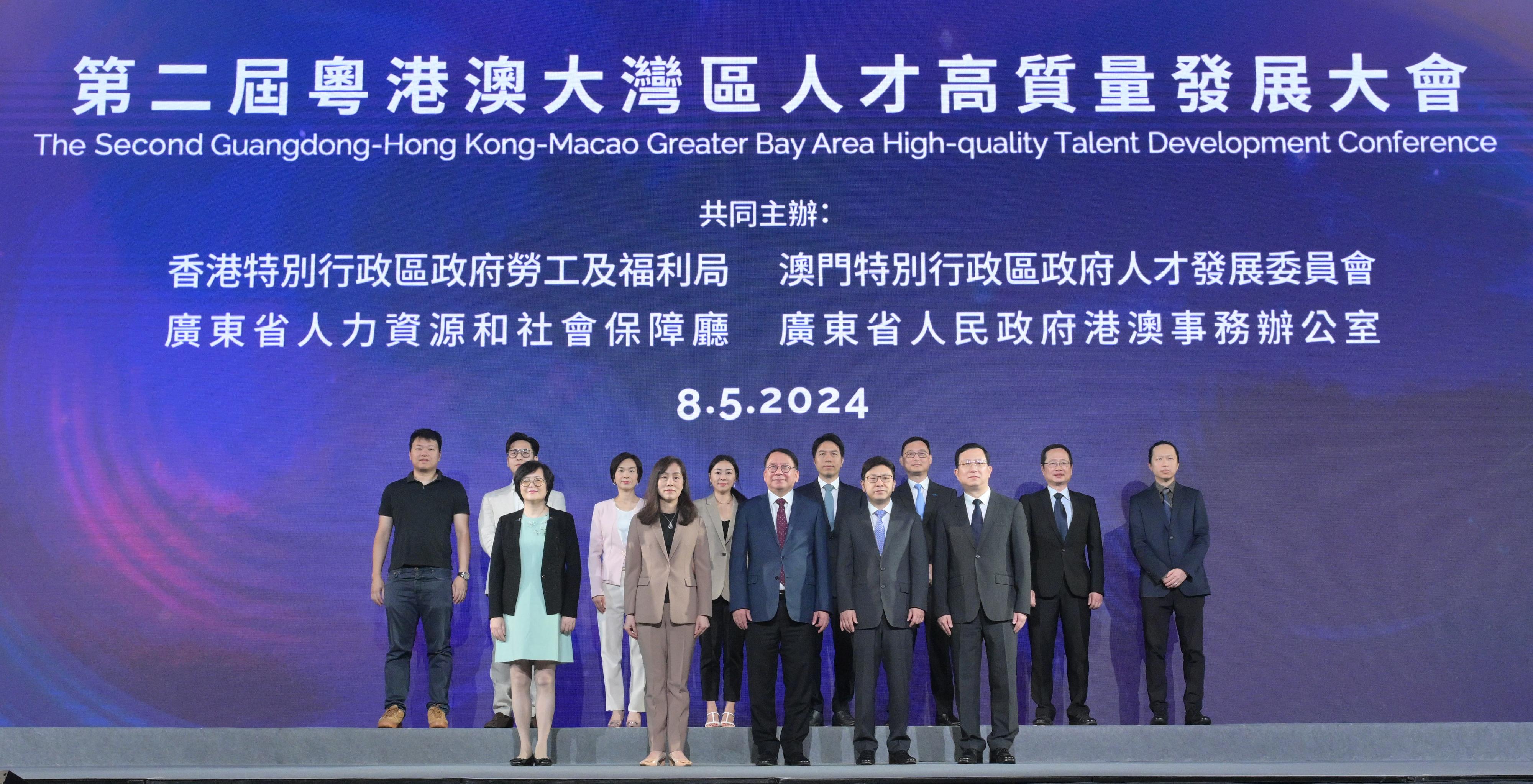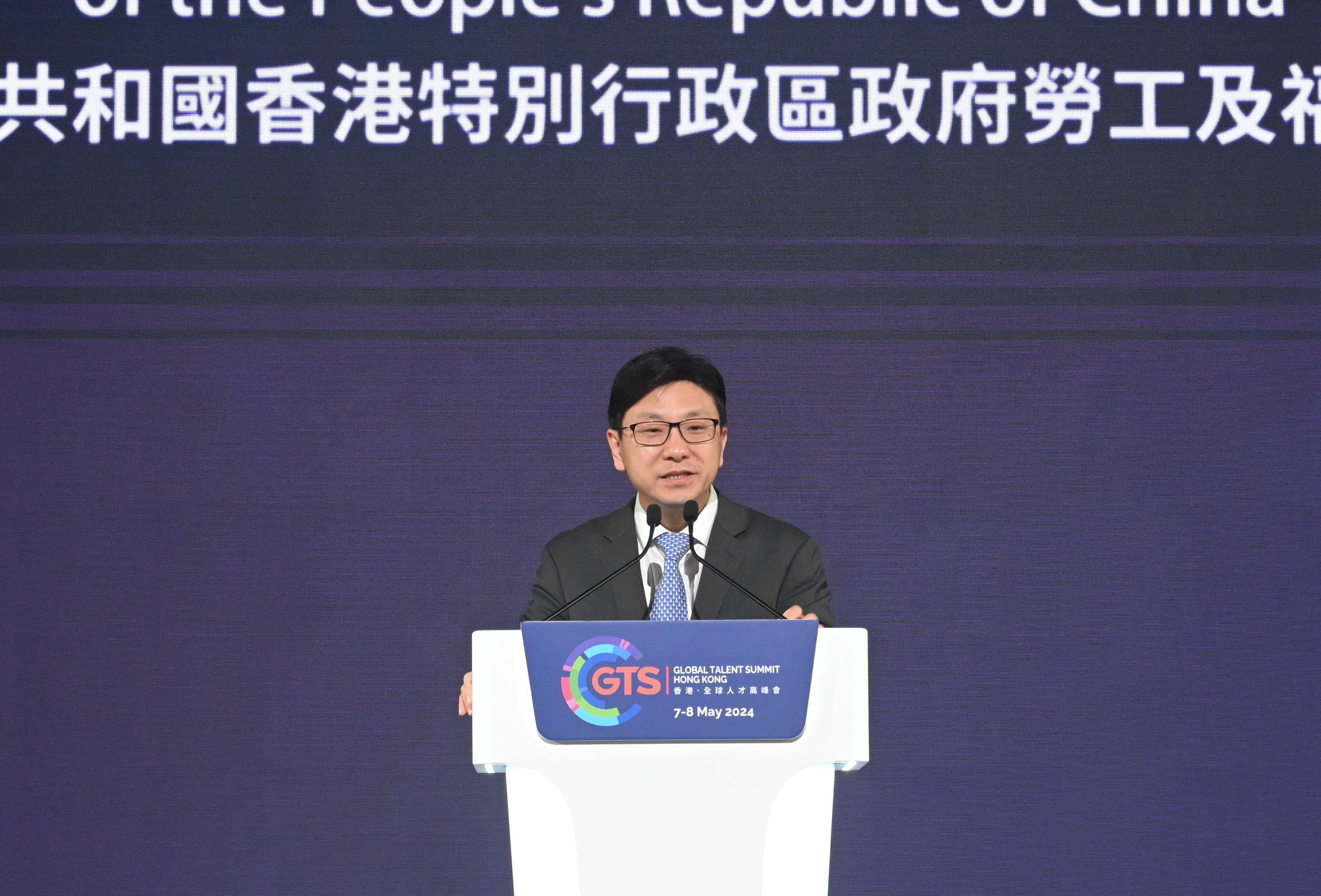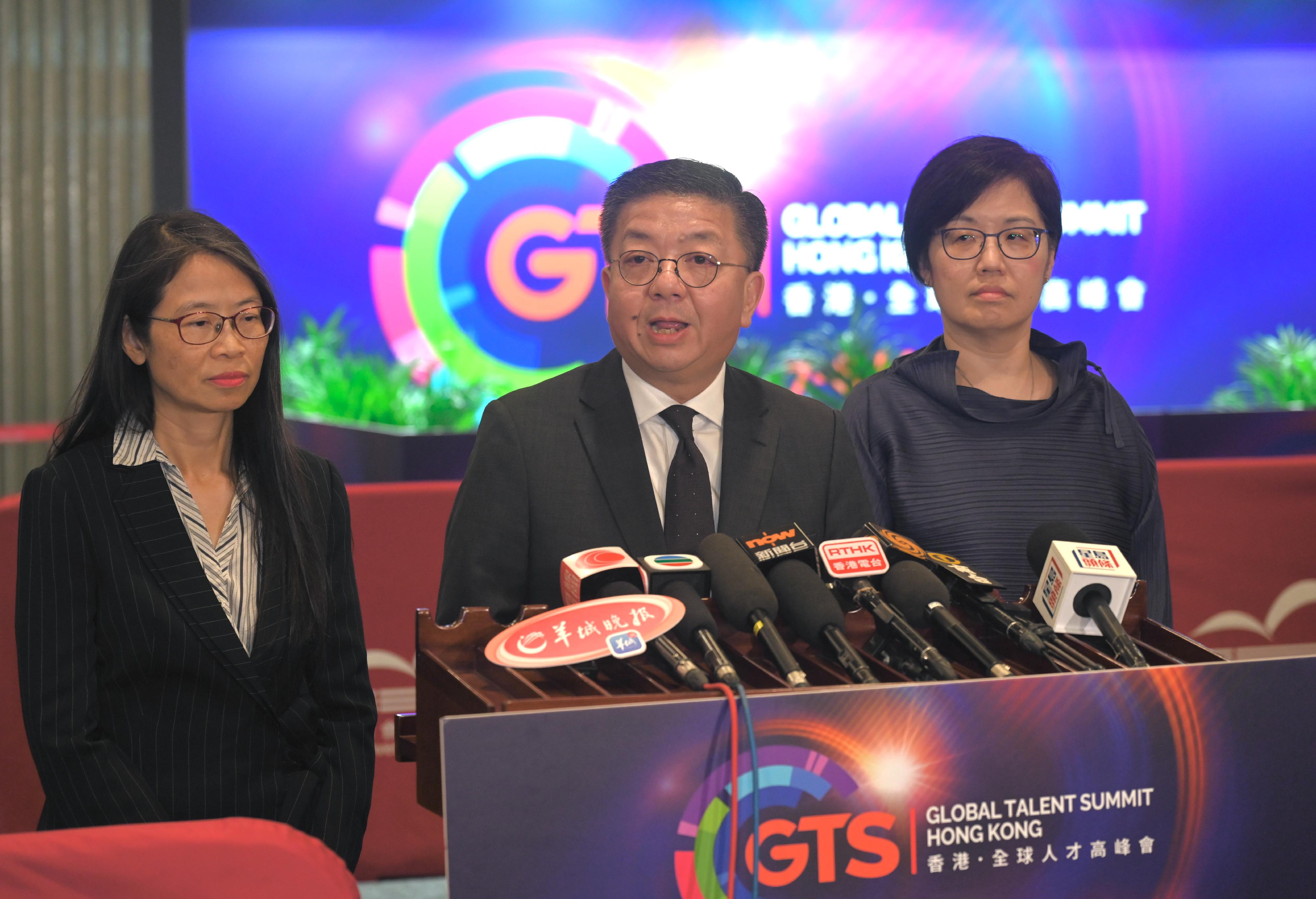Following is a question by the Hon Tang Ka-piu and a written reply by the Secretary for Development, Ms Bernadette Linn, in the Legislative Council today (May 8):
Question:
The 2011-2012 Policy Address put forward the Energizing Kowloon East initiative, which aims to transform Kowloon East (KE) into the second core business district (CBD2) through the development of the office belt and tourism and leisure facilities at Kai Tak as well as the revitalisation of industrial buildings. In this connection, will the Government inform this Council:
(1) of the numbers and gross floor areas (GFAs) of (i) industrial buildings, (ii) commercial buildings (broken down into (a) Grade A offices, (b) Grade B offices and (c) other office sub-sectors), and (iii) business buildings providing accommodation for a mix of industrial and commercial uses in CBD2, and set out in Table 1 a breakdown by age of the building (i.e. (I) 0 to 10 years, (II) 11 to 20 years, (III) 21 to 30 years, (IV) 31 to 40 years, (V) 41 to 50 years and (VI) 51 years or above);
Table 1
| Use of building |
Age of building |
Number of building |
GFA |
| (i) |
(I) |
|
|
| …… |
|
|
| (VI) |
|
|
| (ii) |
(a) |
(I) |
|
|
| …… |
|
|
| (VI) |
|
|
| (b) |
(I) |
|
|
| …… |
|
|
| (VI) |
|
|
| (c) |
(I) |
|
|
| …… |
|
|
| (VI) |
|
|
| (iii) |
(I) |
|
|
| …… |
|
|
| (VI) |
|
|
(2) among the applications received by the Government for the new round of the revitalisation scheme for industrial buildings launched in 2018, of the respective numbers of applications involving industrial buildings in CBD2 that were approved and rejected, and the reasons for the rejection of the applications;
(3) whether it has compiled statistics on the numbers and areas of sites in CBD2 which are currently (i) idle sites for which no development plan has been finalised and (ii) sites for temporary use only with no long-term development plan, and set out in Table 2 a breakdown by landowner (i.e. (a) the Government and (b) the private sector);
Table 2
| Type of site |
Landowner |
Number of sites |
Site area |
| (i) |
(a) |
|
|
| (b) |
|
|
| (ii) |
(a) |
|
|
| (b) |
|
|
(4) of the respective numbers and floor areas of the properties (i) owned and (ii) rented by the Government in CBD2, and set out in Table 3 a breakdown by use of the property (i.e. (a) district service centres of government departments, (b) headquarters of government departments, and (c) others);
Table 3
| Property owned/rented by the Government |
Use |
Number of properties |
Floor area |
| (i) |
(a) |
|
|
| (b) |
|
|
| (c) |
|
|
| Total |
|
|
| (ii) |
(a) |
|
|
| (b) |
|
|
| (c) |
|
|
| Total |
|
|
(5) whether it has compiled statistics on the numbers of companies in (i) innovation and technology (I&T), (ii) culture, (iii) sports, (iv) tourism and (v) other industries (a) operating business and (b) headquartered in CBD2, and the numbers of jobs provided by such companies and their gross output, with a breakdown as set out in Table 4; and
Table 4
| Industry of company |
Operating business/setting up headquarters |
Number of companies |
Number of jobs provided |
Gross output |
| (i) |
(a) |
|
|
|
| (b) |
|
|
|
| …… |
(a) |
|
|
|
| (b) |
|
|
|
| (v) |
(a) |
|
|
|
| (b) |
|
|
|
(6) given that in reply to my question on July 5 last year, the Government indicated that KE has the potential to promote I&T and arts, culture and creative industries given its historical background in industrial development and the ambience of cultural workers moving in one after another in recent years, whether the authorities have plans to further promote the development of the industries of I&T, culture, sports and tourism in KE, and to develop KE into a “city of entrepreneurship” for the aforesaid industries; if so, of the specific measures; if not, the reasons for that?
Reply:
President,
The Government promulgated the Energizing Kowloon East initiatives in 2011, with the objectives to transform Kowloon East comprising the Kai Tak Development Area, the Kwun Tong Business Area and the Kowloon Bay Business Area into Hong Kong’s second core business district (CBD2) and to ensure a steady supply of quality office space in support of the economic growth of Hong Kong and strengthening Hong Kong’s global competitiveness. In 2017, relevant initiatives including enhancing connectivity and improving the environment, etc, have been extended to the San Po Kong Business Area. Since 2011, the commercial gross floor area (GFA) in Kowloon East has increased by a double to currently about 3.4 million square metre.
After consultation with the relevant policy bureaux and departments, the replies to the various parts of the question raised by the Member are as follows:
(1) The statistics on the commercial, industrial and industrial/office developments in Kowloon East (i.e. the Kai Tak Development Area, Kwun Tong Business Area and Kowloon Bay Business Area) by building age are as follows:
| Uses |
Building age |
Numbers* |
GFA |
| Commercial# |
0-10 years |
56 |
About 1 500 000 sq m |
| 11-20 years |
35 |
About 1 300 000 sq m |
| 21-30 years |
8 |
About 400 000 sq m |
| 31-40 years |
6 |
About 200 000 sq m |
| Industrial |
0-10 years |
7 |
About 60 000 sq m |
| 11-20 years |
2 |
About 20 000 sq m |
| 21-30 years |
17 |
About 300 000 sq m |
| 31-40 years |
68 |
About 1 700 000 sq m |
| 41-50 years |
67 |
About 1 000 000 sq m |
| 51 years or above |
77 |
About 700 000 sq m |
| Industrial/Office |
11-20 years |
1 |
About 10 000 sq m |
| 21-30 years |
10 |
About 200 000 sq m |
* as at December 2023.
# including new developments, redevelopments and converted commercial buildings in Kowloon East (i.e. Kai Tak Development Area, Kwun Tong Business Area and Kowloon Bay Business Area), but excluding the commercial portions of residential/commercial developments in the Kai Tak Development. We do not have relevant information by grading of commercial developments.
(2) Another round of revitalisation scheme for industrial buildings was promulgated in 2018. It includes to allow relaxation of the maximum permissible plot ratio by up to 20 per cent for industrial redevelopment sites located outside “Residential” zones in main urban areas and new towns, for which the modified lease should be executed after the town planning approval to put the relaxed plot ratio into effect (redevelopment of industrial buildings); and to exempt the waiver fees incurred for wholesale conversion of industrial buildings aged 15 years or above in “Commercial”, “Other Specified Uses” annotated “Business” and “Industrial” zones into permissible planning uses on the condition that the applicants should designate 10 per cent of the floor area for specific uses prescribed by the Government upon completion of such conversion works (wholesale conversion of industrial buildings).
As at the end of March 2024, the Town Planning Board has received and approved 23 applications for redevelopment of industrial buildings within the CBD2 with relaxation of the maximum permissible plot ratio (excluding applications withdrawn by the applicant and applications involving the same site). For those industrial redevelopment projects requiring lease modification, the Lands Department has received eight applications for lease modification (excluding applications withdrawn by the applicant), of which seven cases have been approved with the lease modifications completed while the remaining one case is still under processing. Regarding wholesale conversion of industrial buildings, as at the end of March 2024, the Lands Department has received one application (excluding applications withdrawn by the applicant) for special waiver for industrial buildings within CBD2 and the application has been approved.
(3) Relevant details of government sites which have been formed and pending the implementation of planned commercial uses in Kowloon East are as follows:
| Location |
Number of sites |
Site area |
| Kai Tak Development Area |
3 |
About 7.8 ha |
| Kowloon Bay Action Area |
To be determined |
About 3.4 ha |
All the above mentioned sites are being put to temporary use at present. We do not have information on the construction timetable of the private lands.
(4) According to the information provided by the Government Property Agency (Agency), the number and the floor area of government-owned properties located within private developments under the management of the Agency and private properties leased via the Agency in Kowloon East (Kai Tak Development Area, Kwun Tong Business Area and Kowloon Bay Business Area) are as follows.
| Type of property |
Number |
Internal floor area |
| Government-owned properties |
Involving individual premises in one building |
About 6 600 sq m |
| Leased properties |
Involving 141 leases |
About 104 000 sq m |
(Note: The Agency has no statistics on the usage of the properties for district service centre or headquarters by government departments.)
Apart from the above properties within private developments, the Government possesses various kinds of facilities and specialised buildings, some of which are used as Government offices, such as Electrical and Mechanical Services Department Headquarters Building, Inland Revenue Centre and Trade and Industry Tower in Kai Tak; Water Supplies Department Kowloon East Regional Building and Central Mail Centre in Kowloon Bay; and Kowloon East Government Offices and Energizing Kowloon East Office in Kwun Tong etc.
(5) According to the Survey on Business Establishments in Kowloon East 2018, the distribution of the establishments by industry within the scope of survey (i.e. the Kwun Tong Business Area and the Kowloon Bay Business Area) is shown in the following table:
| Industry |
No. of establishments |
Percentage of total establishments in Kowloon East (%)
|
| Head office |
Non-head office |
| Manufacturing |
3 481 |
314 |
14.0 |
| Construction |
1 933 |
98 |
7.5 |
| Import/export, wholesale and retail trades |
9 342 |
1 282 |
39.2 |
| Restaurants and hotels |
177 |
29 |
0.8 |
| Transportation, storage and logistics |
890 |
206 |
4.0 |
| Telecommunications services and information technology services |
1 234 |
128 |
5.0 |
| Banking and financial services and insurance |
1 950 |
267 |
8.2 |
| Real estate and professional and business services |
2 682 |
182 |
10.6 |
| Publishing, media and multi-media and creative and performing arts activities and specialised design activities |
1 363 |
85 |
5.3 |
| Healthcare services, and research and development on natural sciences |
204 |
42 |
0.9 |
| Social and personal services |
1 063 |
117 |
4.3 |
| Waste management |
67 |
1 |
0.3 |
(Note: The above categorisation of industries is in accordance with the Hong Kong Standard Industrial Classification promulgated by the Census and Statistics Department. The survey does not cover the number of jobs created by the respective companies and their gross output. The Energizing Kowloon East Office is conducting another round of survey on business establishments in Kowloon East.)
(6) The Government has been introducing related policies in Kowloon East in a timely manner to meet the need of Hong Kong in the time of economic transition. Kowloon East used to be an important industrial base in the heyday of manufacturing industry in Hong Kong. In view of the relocation of Hong Kong’s manufacturing industry to the mainland, industrial land in Kowloon Bay and Kwun Tong have been rezoned to “Business” use which allowed conversion of industrial buildings to office use and redevelopment into commercial/office buildings under the planning regime. Subsequently, the Government introduced two rounds of revitalisation scheme for industrial buildings to facilitate the redevelopment and wholesale conversion of industrial buildings, followed by the introduction of the scheme to charge land premium at standard rates for lease modifications of redevelopment of industrial buildings to encourage revitalisation of industrial building. A number of industrial buildings in Kowloon East have been or will be redeveloped or converted into office, shop and services and hotel uses. Besides, to ensure a steady and adequate supply of quality office space in Kowloon East, the Government has disposed eight pieces of government land in Kowloon East for commercial development since the promulgation of the Energizing Kowloon East initiatives. Flexibility has been allowed in the planning of these commercial sites for the establishment of innovation and technology uses.
Against this context and driven by a series of policy measures, Kowloon East has been transformed into CBD2 with a diversity of industries. In terms of the supply of commercial properties, apart from Grade A office, there are different types of affordable properties of good quality which provide space for developing business by different types of companies. Notwithstanding that the Government has no plan to designate particular site in Kowloon East for innovation and technology use, or to deploy specific measures to promote innovation and technology in Kowloon East, with the unique history of the area, diversified supply of properties especially that manufacturing activities are still active in the area, innovation and technology companies would be convenient in pairing up with the research, academic and industry sectors or other businesses supporting services, while the converted industrial buildings in the area with relatively lower rent would be attractive to startups. These would attract innovation and technology companies to move into Kowloon East. In fact, a number of innovation and technology startups have gradually been stationed in Kowloon East in recent years.
Besides, the Energizing Kowloon East Office (the Office) has been collaborating with private and public sectors to utilise Kowloon East as a Smart City Lab. For example, an indoor-outdoor navigation with voice guidance for the visually impaired/people in needs at MTR stations and some large shopping malls in Kowloon East has recently been introduced under the facilitation of the Office. Others include a proof of-concept trial at the Kwun Tong Typhoon Shelter on Real-time Water Quality Monitoring System completed earlier on and an ongoing trial of Smart Recycling Systems. At the same time, the Office would assist and facilitate different groups in organising promotional activities on smart city development and STEM as means to facilitate the development of innovation and technology.
Regarding culture, sports and tourism development aspects, the Culture, Sports and Tourism Bureau will fully utilise the opportunities brought by the Kai Tak Sports Park (KTSP), East Kowloon Cultural Centre and Kai Tak Cruise Terminal, and their collaboration with other facilities in the district, to develop culture, sports and tourism as well as bring new experiences to visiting tourists. As an incubator for the development of arts and technology, the East Kowloon Cultural Centre which is adjacent to Kowloon East CBD2 will bring new cultural experience to the community. Whereas for KTSP, it will provide venues for hosting mega sports and entertainment events, thereby giving impetus to the development of relevant sectors.
read more









